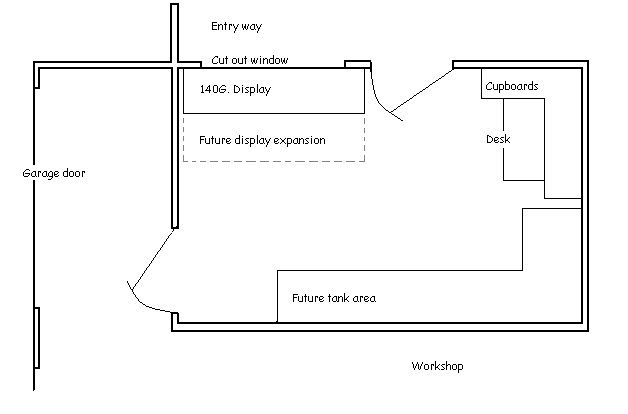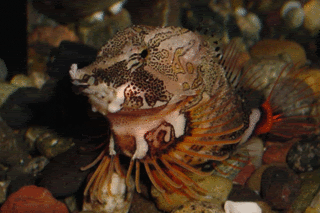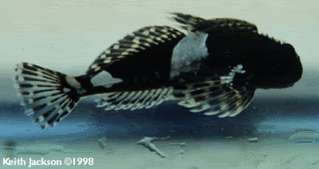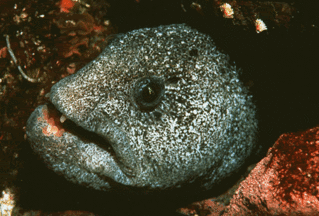
 |
|
#11
|
|||||
|
|||||
|
Quote:
__________________
-- Tony My next hobby will be flooding my basement while repeatedly banging my head against a brick wall and tearing up $100 bills. Whee! |
|
#12
|
|||||
|
|||||
|
Good replies all, thanks.
I'll look into those threads and links. Some thoughts: For me the hobby is as much about tinkering and DIY as it is about the livestock. I find I am pleased but bored with tanks once they are stable so I either wind up with ten tanks (been there) or need a big project I can really sink my teeth into. After much "negotiation" with the boss, I am consigned to the unheated garage to construct my fishroom - if I ever want one (no I don't park in there I've been monitoring the temps in there for a year now and it dips to low 40's in the winter and 60's in the summer. Close enough for a coldwater coastal setup using ambient room temps I hope (no heaters or chillers). This means there will be no condensation issues for the tank in the garage (other than evaporation due to water movement and lights), leaving just the one pane cut through the entryway wall to worry about. I am considering fan tubes running between the studs and venting out the top sill of the cut out. For the tidal effect I had planned to use a very undersized pump so that it takes a long time to fill up to the high tide drain. Once it hits that mark it can pump for the rest of the cycle like a conventional display/sump set up. I have to think about draining though. It is a good point that I don't want it to backflow too fast or some species may be caught high and dry by accident. I plan to do more research on species that can handle the slightly warmer overall temps (60 -40F.) but I think tidal zone species fit the bill as their temps are all over the map anyways. I'll edit this post with a layout of the fishroom design Here it is. This is one half of our two car garage. I have to build some walls and the tank is shown in two phases. First the 140G. I have now and then a larger plywood tank I plan to build this winter. The empty wall allows for more tanks in the future.  ________ S2 Last edited by Dale; 01-21-2011 at 02:25 PM. |
|
#13
|
|||||
|
|||||
|
one other thing to note, our water temp only verries by about 3 or 4 degrees between summer and winter.
Steve
__________________
 *everything said above is just my opinion, and may or may not reflect the views of this BBS, its Operators, and its Members. If cornered on any “opinion” I post I will totally deny having ever said this in a Court of Law…Unless I am the right one* *everything said above is just my opinion, and may or may not reflect the views of this BBS, its Operators, and its Members. If cornered on any “opinion” I post I will totally deny having ever said this in a Court of Law…Unless I am the right one*Some strive to be perfect.... I just strive. |
|
#14
|
|||||
|
|||||
|
Quote:
http://hmsc.oregonstate.edu/projects/msap/index.html |
|
#15
|
|||||
|
|||||
|
I applaud your efforts to engineer an intertidal zone but I'm really sort of stuck on what animals in the intertidal zone you wish to showcase? All the things I can think of in that zone, are maybe things that could easily do without the low tide (or could just have a section of land/rock in the tank that is above the waterline, like a paludarium of sorts, where the in-betweeners could go if they so desired).
Any fish, mollusk, starfish, etc. that can tolerate being in an intertidal zone can likely do just fine without being exposed at low tide. The only exception I can think of are those little beach crabs.. And I dunno, I think a beach area in the tank could probably service them just as well as anything (and could be an interesting feature point of the tank as well). Again, it's something interesting to engineer, I've often thought about ways to accomplish it as well, but in the end I wonder if it's really necessary, i.e., if you could enjoy a coldwater habitat without the varying water levels of a tide. Another method is to have two overflows, and an actuated ball valve on the lower overflow. Dial back the lower overflow so that it's a super slow drain anyhow. Then open and close the actuated valve every six hours. There ya go, I gave you an idea just to show I'm not completely raining on your dream 
__________________
-- Tony My next hobby will be flooding my basement while repeatedly banging my head against a brick wall and tearing up $100 bills. Whee! |
|
#16
|
|||||
|
|||||
|
Thanks for the link scavenger - just what I'm looking for!
D - No raining on parades here I'm committed to the C.W. tank but not the tidal pool per say. It is a design I've been kicking around in my head for a while and I may set it up barebones just to see what happens. I like the idea of putting a super slow valve on the low tide drain. The tank has 4 bulkheads in the bottom so one could go: standpipe #1 - high tide drain standpipe #2 - returnline (at or above high tide drain level) standpipe #3 - valved low tide drain Standpipe #4 - emergency high tide drain As long as the return pump fills slightly faster than the low tide drain it will fill and maintain the high tide. When it shuts off the display will slowly drain to low tide. I think I like it. If one focuses on true ocean temps there isn't much variation granted but I have long suspected that intertidal species do tolerate a wide variation of temp extremes. I've noted this many times when I've poked about in natural tidal pools. A sculpin (for example) caught in a shallow pool will go from true ocean temp to quite warm in a matter of hours on a sunny summer day. The plan here is to only stock intertidal species. Here are some temp ranges from the link that scavenger provided: Arrow Goby: 4 -26C Black rockfish: 10 - 17 and up to 22C Grunt sculpin: up to 23C Longspine combfish: up to 24C Starry flounder: 0 - 21.5C 3 spine stickleback: up to 26C Grunt sculpin  Mosshead sculpin  Tubesnout  or for the adventurous, Wolf eel  Photo's from hmsc.oregonstate.edu ________ cheap easy vape vaporizer Last edited by Dale; 01-21-2011 at 02:25 PM. |
|
#17
|
||||
|
||||
|
I considered doing the same thing at my office which is actualy floating on the ocean All i would have had to do is Pump fresh salt water (from about 20ft below the office for polution reasons) and add a PC light i could have collected things right off the pillings out side my door and the fish could be colected and released as reqired for size .... What a great idea until i was told By a conservation officer that NO IT IS ILLEGAL TO COLLECT FROM the wild, Exept what is in the Fishing regulations such as crabs, clams , most fish , Ect with a fishing licence.... Most of the stuff i wanted to keep where pertected
|
|
#18
|
|||||
|
|||||
|
Dale, one thing you might be able to do to make your intertidal critters feel more at home is add some form of chilling to the sump but not the display tank.
That way, as the tide is dropping the ambient temp of garage might warm display water a bit, like a true tidal zone. In the sump, you could even try to figure out your evap rate and have an ice cube dump for your top off if you can't afford a chiller. Once the return kicks in (raising tide) the critters will be hit with colder water much like the natural enviroment. Just a theory, but I'd guess certain behaviors in your livestock would be more triggered by temp than light. |
|
#19
|
|||||
|
|||||
|
Just an update.
I'm now in the "process" of communicating with the Fed and Prov Gov's re. collection and transport issues. Welcome to my nightmare!!! Oh well, no brick walls yet - just lots of detours. I'll post the results when and if I ever have some. So far the people I have spoken to both there and at the V.Aquarium have been nice enough and want to help but no one seems to know how to apply the rules to this situation. I've had a tank and sump running in the garage for a week now and as suspected, no condensation. I really want to try to avoid any temp imput so that the tank follows the ambient temp in the garage. Already I see that my submersable pump is adding heat so I will probably go to an external pump. ________ Aprilia Pegaso 650 Last edited by Dale; 01-21-2011 at 02:26 PM. |
|
#20
|
|||||
|
|||||
|
Dale,
I was going to do this tank set up a couple of years back.. I wrote the DFO and was assured all you need is a valid Salt Water fishing licence if you are collecting your own livestock. Just respect the area/season closures and catch quota. Anything you collect for your tank will come under the "other" quotas. Unless you plan on stocking a swimming pool, I doubt you'd limit out! Last edited by Scavenger; 10-03-2006 at 03:31 PM. |